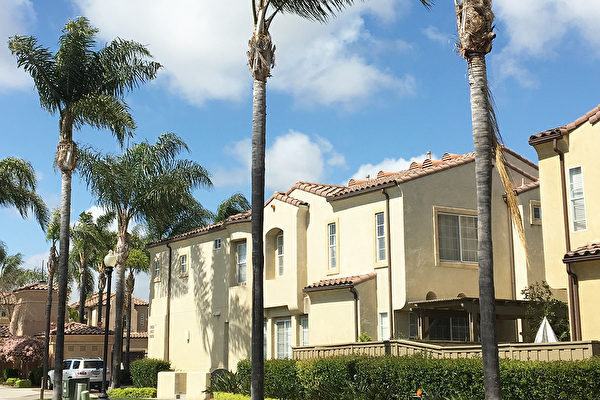In recent months, San Diego has emerged as a leader in the soaring housing market in Southern California, with prices showing double-digit year-over-year increases in January and February. Even as the 30-year fixed mortgage rate hit its highest point of the year at 7.52% last week, housing prices remained high, making it the most expensive area for housing in Southern California outside of Orange County. While Los Angeles may not be experiencing the same level of price growth as San Diego, it is still leading the pack nationwide.
According to Mortgage News Daily, as of this Wednesday, the 30-year fixed mortgage rate, although slightly decreased to 7.41%, remains high, reaching its highest single-day record since November of last year. While high interest rates have limited the number of buyers who can afford a mortgage, they have had little effect on the skyrocketing housing prices.
In the sizzling real estate market of San Diego, local real estate agent Joanna shared her experience of purchasing a one-bedroom apartment for just under $200,000 in 2016, only to discover this year that the market value of the property had risen to $380,000. She had expected housing prices to decline during the pandemic, but instead witnessed a continuous surge.
According to CoreLogic data, San Diego saw double-digit increases in housing prices for the months of January and February, leading the nation. Fox 5 reported that last month there were 2,383 homes for sale in the city, an 8% increase from the previous month; more than half of the sold homes fetched prices higher than their asking prices. Recent data from Realtor website shows that the median listing price for homes listed in San Diego County in March was $995,000, with an average turnover time of just 30 days.
In another major city in Southern California, the Los Angeles metropolitan area has also seen a significant surge in housing prices, with an 8.7% month-over-month increase, setting a new record. Data from realtor.com shows that in March, the median days on market for homes listed in Los Angeles County was 40 days, indicating a seller’s market. Housing prices have risen by 10.6% compared to the same period last year. The housing inventory supply in Southern California stands at 2.6 months, far below the 4-6 months required for a balanced market.
Vivian Chang, a Chinese-American real estate agent in Los Angeles, described the local real estate market as “hot,” noting that it is a seller’s market due to limited housing supply – “houses that couldn’t sell last year are now selling for higher prices this year.” For example, a 2,200-square-foot house in Diamond Bar that couldn’t sell for $1.18 million last year was successfully sold for $1.32 million after being relisted this year. However, Chang observed that most sellers she encountered were moving out of California.
Looking at the nationwide picture, as of February, the annual house price increase in the U.S. was 6.4%, higher than the previous month’s 6.0%. The composite index for the top 10 cities in the U.S. increased by 8.0%, surpassing the previous month’s 7.4%. The composite index for the top 20 major cities in the U.S. showed a year-over-year growth of 7.3%, up from the previous month’s 6.6%.
The rising housing prices and mortgage rates are further burdening buyers. Data from Redfin reveals that the median monthly mortgage payment in the U.S. increased by 15% year-over-year, hitting a record high of $2,890. However, the booming housing market performance indicates that decreasing affordability has not dampened the rise in housing prices.
Brian D. Luke, the director of the S&P Dow Jones Indices Commodity, Real Asset, and Digital, noted in a report that enthusiasm for potential rate cuts and lower mortgage rates seems to be supporting buyer actions. Yet, some economists argue that the severe shortage of homes in the market is driving the strong price increase observed in February.
According to discussions among economists in the “San Diego Union-Tribune,” there are various reasons why high rates have not curbed rising housing prices. James Hamilton, an expert from UC San Diego, believes that many anticipated rapid rate drops, expecting to refinance quickly at very low rates; however, the actual rate decline has been much slower than many had anticipated.
Alan Gin, an expert from the University of San Diego, suggests that institutional investors are entering the market with substantial cash offers, allowing them to avoid the impact of high rates. The combination of decreased supply due to reluctant sellers and increased demand from institutional investors has collectively driven up local housing prices.
Given the current trends, what changes can be expected in the California housing market by the end of the year? Thomas Ryan, a real estate economist from Capital Economics, predicts in a report that by the end of the year, prices will rise by 5%, with a further 3% increase projected for next year.

